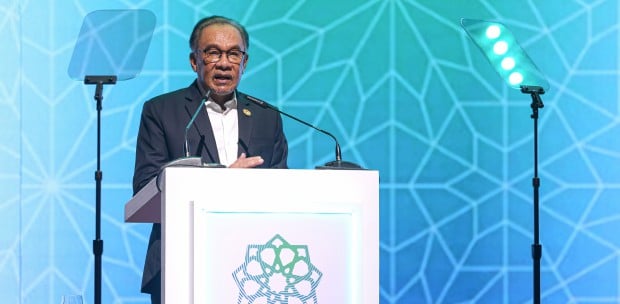KUALA LUMPUR: The Employees Provident Fund (EPF) is expected to pay lower dividends for 2022 when announcing its full-year performance tomorrow, according to economists.
Economic analyst Dr Aimi Zulhazmi Abdul Rashid said due to the poor performance of the local stock market last year, the EPF dividend return would likely be lower at 5.0-5.5 per cent.
Aimi said the EPF had RM961.1 billion in investment assets as of September last year, and this would have an impact on the dividend payment.
The possible lower dividend would also be largely due to the massive withdrawals from 2020 to early 2022 through four special programmes.
An EPF withdrawal of up to RM10,000 per member was allowed last year, following the i-Lestari and i-Sinar schemes in 2020, and i-Citra in July 2021.
"The lack of total assets under management also causes the EPF to lose investment opportunities and reduce negotiating power with global professional fund managers to provide higher returns," Aimi told the New Straits Times.
For 2021, the EPF dividend rate stood at 6.10 per cent for conventional savings and 5.65 per cent for shariah savings. This beat the dividends of 5.20 per cent (conventional) and 4.90 per cent (shariah) in 2020.
Malaysia University of Science and Technology economist Dr Geoffrey Williams said despite being lower, the expected dividend would be a good return and much better than most low-risk investments or fixed deposits.
Volatile international market, higher interest rates and poor domestic returns on underperforming Malaysian companies were the reasons for the expected lower dividend, Williams said.
"The dividend for 2021 was probably higher ahead of general election to create a feel-good factor which did not work.
"The lower dividend for 2022 may also be the price members have to pay for the previous withdrawals.
"Around 15 per cent of the value of the EPF fund was withdrawn previously, so investment opportunities were smaller and this eventually hit existing members," he said.
Putra Business School economic analyst Associate Prof Dr Ahmed Razman Abdul Latiff felt that the EPF would maintain its dividend rate, despite the negative growth of Bursa Malaysia and other top stock market indices such as FTSE and Dow Jones last year.
Ahmed Razman said a higher number of members would mean the EPF has to allocate RM9.5 billion for every one per cent of dividend.
"Therefore, a reduced rate of investment, together with higher allocation needed for the dividends, will cause EPF to maintain or post a lower dividend rate," he said.
In 2021, the EPF reportedly needed RM9.38 billion to pay for every one per cent of dividend.
Universiti Putra Malaysia School of Business and Economics Associate Professor Dr Mohammad Khair Afham Mohd Senan agreed that the possible lower dividend was partially due to the downward performance of the financial market globally for the past year.
Khair said another contributing factor was rising interest rate, which resulted in more expensive loans, thus reducing the capacity for investors to spend.
"Rising economic uncertainties globally due to wars, de-dollarisation and economic sanctions will hinder investors from investing and will slow productivity," he added.
The EPF recorded a total gross investment income of RM39.31 billion for the nine months ended Sept 30, 2022, down 18 per cent or RM8.71 billion, from RM48.02 billion recorded in the same period in 2021.





